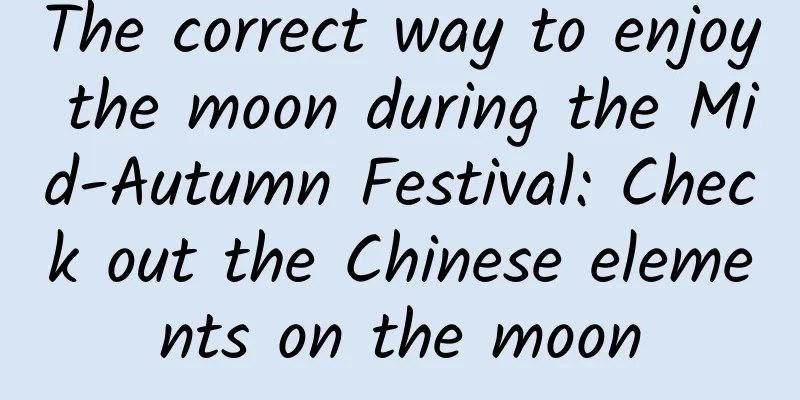The efficacy and function of Nepeta spicata

|
I believe that many people do not know what Nepeta spike is. In fact, Nepeta spike is the flower spike of a plant called Nepeta. It is light brown or yellow-green in color, has an aromatic smell, and tastes a bit bitter. But don't underestimate Schizonepeta spicate. It also has great medicinal value and can treat various diseases, including headaches, postpartum fainting, bloody stools, colds and other symptoms. It can be seen that the efficacy and function of Schizonepeta spicate are very great. Schizonepeta spicate can be decocted and drunk with other Chinese herbal medicines, such as chrysanthemum, mint, honeysuckle, etc., to have more significant effects in dispelling wind and clearing heat. Below I will give you a detailed introduction to the medicinal material Schizonepeta spicate, and what are its effects and functions. Nepeta paniculata Nepeta spike is the flower spike of Nepeta, a plant of the Lamiaceae family. It is a spike-shaped cyme, about 0.5 cm long, in irregular small segments. The corolla is mostly deciduous, the persistent calyx is bell-shaped, with 5 teeth at the apex, light brown or yellow-green, and covered with short soft hairs. Nutlets brown-black. It has a fragrant aroma and a slightly astringent and cool taste. The efficacy and function of Nepeta spicata Indications: Relieve exterior symptoms and dissipate wind, clear rash, eliminate sores, and stop bleeding. Used for colds, measles with poor outbreaks, bloody stools, metrorrhagia, and epistaxis. Release wind, regulate blood; stir-fry until charcoal stops bleeding. It is used to treat colds, fever, headaches, sore throats, lockjaw caused by stroke, vomiting blood, nosebleeds, bloody stools, metrorrhagia, postpartum fainting, carbuncles, sores, scabies, and scrofula. Schizonepeta spicata has the same effect, but its dispersing power is stronger. Schizonepeta has the effect of inducing sweat and relieving exterior symptoms, and has the effect of dispelling wind. It is mainly used to treat colds, fever, chills, no sweating, headache, body pain, etc., and is often used together with Saposhnikovia divaricata. However, it can also be combined with pungent and cool antipyretic drugs or heat-clearing and detoxifying drugs to treat colds, wind-heat, fever, chills, red eyes and sore throat, such as mint, chrysanthemum, mulberry leaves, honeysuckle, etc. Schizonepeta has a pungent and dispersing effect that can help measles break out, and is often used in combination with mint, cicada shell, burdock seed, etc. Schizonepeta is often used for patients with initial symptoms of sores and ulcers. It can be used together with Saposhnikovia divaricata, Lonicera japonica, Forsythia suspensa, and Red Peony Root to reduce chills and fever and eliminate carbuncles and swellings. The application of fried charcoal of Schizonepeta can enter the blood and stop bleeding. It can be used for symptoms such as bloody stool and metrorrhagia. It is often used together with other hemostatic drugs in clinical practice. The herb Schizonepeta tenuifolia has the effect of dispelling wind and relieving exterior symptoms when used raw, and can be used to stop bleeding when roasted into charcoal. Combined with Saposhnikovia divaricata and Qianghuo, it can treat wind-cold symptoms on the surface; combined with honeysuckle, forsythia and mint, it can treat wind-heat symptoms on the surface; combined with gypsum, it can treat wind-heat headache; combined with burdock, platycodon and raw licorice, it can treat sore throat; combined with Sophora japonica charcoal, it can treat bloody stool; combined with Imperata cylindrica root, it can treat nosebleed. Both Schizonepeta and Perilla can induce sweating and relieve exterior symptoms, but Perilla is stronger in dispelling cold, tends to enter the Qi, and can regulate Qi and relieve fullness; while Schizonepeta is stronger in dispelling wind, tends to enter the blood, and can stop bleeding when fried into charcoal. Therefore, Perilla is often used in Qi-regulating prescriptions, while Schizonepeta is often used in blood-regulating prescriptions. Function: Relieve exterior symptoms, dissipate wind, and clear rash. Used for colds, headaches, measles, rubella, and the initial stage of sores. Fried charcoal can treat bloody stool, metrorrhagia, and postpartum fainting. 1. External symptoms. This product has a pungent and fragrant smell, is good at dispersing wind, and is slightly warm but not strong. It has a mild nature and is the mildest among the drugs for dispersing wind and cold. It can be widely used for exogenous symptoms, regardless of wind-cold, wind-heat, or neither cold nor heat is obvious. 2. Measles is not clear and urticaria is itchy. 3. When sores and ulcers first occur, there are also external symptoms. 4. Various bleeding symptoms such as vomiting blood, epistaxis, blood in stool, metrorrhagia, etc. 【Usage and Dosage】 For internal use: decoct in water, 1.5-3 qian; or make into pills or powder. For external use: mash and apply, grind into powder and apply or decoct in water for washing. 【Selection】 ①Treat wind-heat headache: take equal parts of Schizonepeta spicate and Gypsum. For the end. Take 2 qian each time, mixed with tea. ② Treat various diseases of the head and eyes, blood fatigue, wind-induced headache, dizziness and vertigo: grind Schizonepeta spicate into powder. Take three grams of each wine. ③ Treat wind-heat congestion in the lungs, sore throat, inability to speak, or feeling as if something is choking: 0.5 liang of Schizonepeta spicate, 2 liang of Platycodon grandiflorum, 1 liang of licorice (roasted). The top is coarse. Take four grams each time, add one cup of water and three slices of ginger, boil for six minutes, remove the residue, and drink warm after meals. After reading the detailed answer to the question above about what are the effects and functions of Schizonepeta spicate, I believe everyone has some knowledge and understanding of Schizonepeta spicate. Schizonepeta spicata can indeed treat various diseases, and the effects are very significant. You may want to follow the recipe introduced above and boil the Schizonepeta spicata and other medicinal materials to drink it, which will improve the therapeutic effect. |
<<: The efficacy and function of calendula
>>: The efficacy and function of antelope horn
Recommend
Can lily be soaked in water and drunk?
Lily, as a flower with extremely high ornamental ...
The efficacy and function of angelica and how to eat it
There are many types of Chinese medicine, and eac...
How long does it take for a fetus to have cerebral palsy if it is lack of oxygen?
There are many causes of cerebral palsy, one of t...
The efficacy and function of ginger grass
There are many kinds of common Chinese medicinal ...
What are the uses of snow lotus?
I believe that when talking about snow lotus, man...
Here are all the ways to choose grapes that the fruit shop owner won’t tell you!
Now is the season when grapes are put on the mark...
How to eat Gastrodia elata
Gastrodia elata is one of the more precious tradi...
Whoosh! Whoosh! Whoosh! How should spacecraft respond to micrometeoroids and space debris?
In December 2022, just as Russian astronauts Serg...
The efficacy and function of Prunella Vulgaris Dew
The efficacy and function of the traditional Chin...
The efficacy and function of Liangwang tea
Traditional Chinese medicine is very helpful in t...
What is the medicinal value of Pueraria lobata
There are many kinds of plants in nature, and man...
This lousy "big-tailed wolf" of Buggy is actually a whale?
This year's species calendar includes many la...
The role and efficacy of cypress seeds
Cypress seeds can moisten the intestines and prom...
Can licorice be soaked in wine?
The medicinal value of licorice is very high, esp...
Who should not eat wolfberry?
Wolfberry is a traditional Chinese medicine that ...









